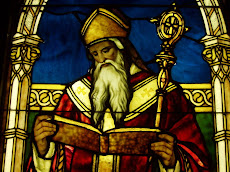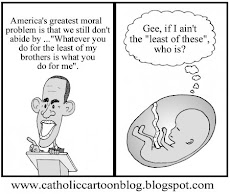I just read the new book by Episcopalian journalist William Murchison on the descent of the Episcopal Church into division, heresy and chaos over the past 50 years. It is called Mortal Follies: Episcopalians and the Crisis of Mainline Christianity (Encounter Books, 2009).
It is a breezy, light-weight, but generally accurate and very well-written account of the process by which TEC has declined beginning with the 1960's. He does a fairly good job of analyzing the links between the various movements - the civil rights movement, social activism, women's liberation, prayer book revision, inclusive language, women's ordination and the pro-homosexual movement. If he is, as a layman, unable to reflect theologically at an expert level, he at least is perceptive enough to lament the lack of theological discussion of these issues by those qualified (and charged by office) to do do.
His basic thesis is that the church got caught up in mirroring the culture and blending into the culture in the decades prior to the 1960's when church and culture were not in such dramatic tension and was thus unprepared to resist when the culture suddenly lurched in an anti-Christian and radical direction. Having grown unused to converting people out of the culture, it found that it could do nothing but flow along with the culture even when the culture led it away from Scripture, Christian Tradition and other Christian Churches.
I was struck, however, by a passage in which Murchison tellingly describes the justification offered by the innovators for their new doctrine. After referring to Hooker's three-legged stool of Scripture, Tradition and Reason as a balanced approach designed to steer a course between fanaticism and apathy, he notes the new style apparent in the TEC in the 1970's:
"In no time, progressive Episcopalians began to speak of visits from another spirit - the Holy Spirit, the one identified by Paul (I Cor. 2:11) as revealing the thoughts of God. The attribution to the Holy Spirit of a will to overthrow old standards, old arrangements, is on the the persistent themes in recent Episcopalian history. Not long after the General Convention of 2006, an Episcopal publication ran a letter that epitomized that theme. 'If we accept the idea that Jesus reflects the will and nature of our Creator,' said the letter-writer, a priest, 'then it appears that God isn't male-biased. The Holy Spirit, whose guidence we always seek when we consider making changes in the Church, must be leading us toward egalitarianism and away from autocracy and a hierarchial form of polity.'
How was that again? The Spirit was saying . . . what? And how were others to know it was truely the Spirit talking and not just some angry inner voice? Where was the proof? As to women's ordination, the issue with which the letter-writer was immediately concerned, why had no promptings of the Holy Spirit reached the Roman Cathoics and the Orthodox, who continue to understand the all-male priesthood as God's will for the Church? Was it that the Spirit particularly liked Episcopalians? How was one to know? Where was the proof? None has ever been forthcoming." (pp. 185-6)
Put like that, the whole thing reminds one of nothing so much as the ancient heresy of Montanism.
Monatanism was one of the first heresies and became popular in North Africa. Montanus, accompanied by two female prophetesses, Prisca and Maximilla, began to prophesy and claimed to be speaking in the name of the Holy Spirit. He claimed that the Holy Spirit was now revealing new truth about sexuality, fasting and other matters. In keeping with the tenor of the times, it tended to be ascetic rather than promiscuious, but it did allow the leaders of the sect to re-interpret Catholic Christianity in a way that suited the sect leaders' desire for updating the message of the Church to suit new conditions. Montanism managed to recruit Tertullian as a member, but eventually it was condemned as a heresy. This early attempt at women's ordination did not work out so well.
What we appear to have in the appeal to the Holy Spirit as justification for going against Scripture, Tradition and Reason is a new outbreak of Montanism. But this time, instead of the bishops of the Church refuting and casting out such heresy, the TEC bishops have capitulated to it and thereby allowed an historic branch of the Christian Church to be re-invented as a sect. Significantly, the bishops of the Roman Catholic Church, Eastern Orthodoxy, or 80% of the Anglican Communion for that matter, have not received this prophecy as the authentic voice of the Holy Spirit.
The absolute self-confidence of the TEC leadership that in time their innovations will be accepted by the whole Church is breath-takingly audacious. But it reeks of the same, tired, old pride exhibited by heretics and schismatics throughout the history of the Church. John Spong may claim that the Church must change or die, but it would appear that it is the innovators themselves who are doing the dying. His diocese (Newark, New Jersey), according to Murchison, has declined 46% in membership since 1972 and 16% of its churches have closed. (p. 36) Meanwhile, the Roman Catholic Church is further away from embracing women's ordination and homosexuality than it was 50 years ago. (You will not even find "inclusive language" on the Vatican website.)
So much for the claim that it was the genuine voice of the Holy Spirit revealing the "new things" that dominate the life of TEC today. The new things turn out to be no so new and although they were undoubtedly revealed by a spirit, it looks more likely that it was the spirit of the age rather than the Holy Spirit.
Subscribe to:
Post Comments (Atom)





No comments:
Post a Comment